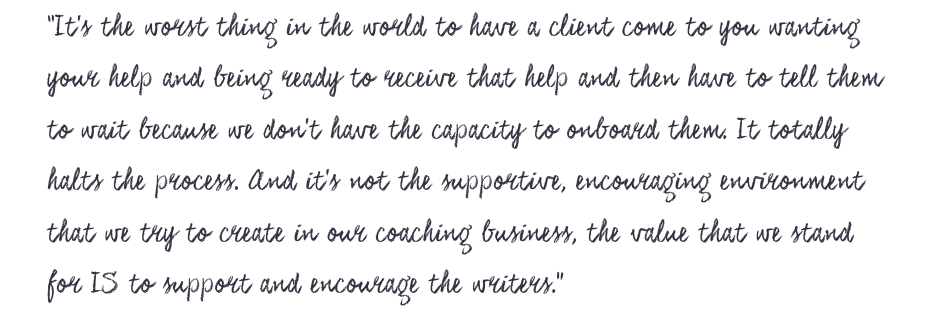One of the most challenging parts to scale as the business grows is customer experience. Especially, if exceptional customer experience is your core value. If that’s the case, you take immense pride in the kind of results you create and how your clients feel when they work with you.
Many such coaching businesses and agencies, as they begin growing, get conflicted about whether or how to maintain the high quality of service and the high touch aspect of their work.
It’s a serious dilemma because it’s not just about hiring more experts to provide the excellent service and/or growing your customer support team to take great care of your clients.
It’s about adjusting the systems so that they can allow for an economy of scale.
After all, no one wants a business where by adding a new customer proportionally increases the cost of delivering the service and experience.
Many of our clients who successfully scale their high-touch high-impact offerings solved this problem by building a customer hub―a single place that allows them to zoom in on specific clients and zoom out on the entire client base.
It’s a tool that:
- Gives them the level of control they’ve always craved,
- Allows their team to easily prioritize their workload,
- Ensures that the customer experience is still at the same high level, and, best of all…
- Can grow with the business
Stay tuned for the conversation about how to create a customer hub. Right now, let’s look at the signs your business is ready for such a customer hub:
1. You constantly worry that something would fall through the cracks
When the information about clients and their projects is scattered across different platforms, tools, folders, and spreadsheets, it’s practically impossible to have a real-time, ongoing understanding of every client project’s status. Because of that you keep as many details about each client’s project as possible in your head which (1) is not scalable, and (2) leads to midnight panic attacks:

If delivering exceptional customer experience is at the heart of your service and the amount of information you try keeping track of grows with every new client, you begin dreading the day you or your team member drop one of your many juggled plates. Because you know, it’s just a matter of time.
2. In an attempt to keep everything under control, you end up micromanaging your team
Not having a central place for client information, organized in a way that you can see at a glance where things are with each client, is really frustrating. It also makes delegation very challenging, because you need to be in constant communication with your team:


Naturally, the team follows your lead. So that they don’t make a mistake, they begin constantly double-checking information scattered across folders and platforms, emailing each other for clarification, waiting for responses before acting, and regularly checking in with you for direction on what to do next. It’s a vicious cycle.
3. You begin noticing that the experience you provide doesn’t match your values
The delays caused by having to keep track of information, cross-referencing different platforms, and re-entering the same data into different spreadsheets are dreadful at any phase of the process. But they are especially detrimental during onboarding.
The experience of our client, Author Accelerator, a company that offers premium book coaching programs, could be summed up in the words of Laura Franzini, Managing Editor. Laura is responsible for matching writers with coaches. She used to spend five hours spread out over the course of about a week to pair just one writer with their coach:


4. Multiple platforms and spreadsheets keeps your data hostage and prevents you from spotting patterns and problems
Most of the clients we work with rely heavily on critical metrics. They know that the data and feedback they collect could be used to make their offerings even more impactful―but all their existing data collection is manual and time-consuming and there is no easy way to gather useful insight from it.
Our client Jessica Abel, a coach, consultant, artist, and creator of the program Creative Focus Workshop, put it this way:


And so, you pay attention to data that’s easy to get access to and base the rest of your decisions on guesses and hunches.
5. You are annoyed that you have to squeeze your way of doing things into what different tools allow you to do
We use dozens of tools to run our business. And that’s because it’s practically impossible to find a tool that does everything that we need and that works the way we want it to work. As a result, we keep adding tools, fitting them in, getting each new tool to do one little thing. Until one day continuing that way doesn’t feel doable anymore:


If your goal is to continue scaling your operations, it’s important to evaluate the impact of adding every new tool or procedure on the rest of the processes. Because it will impact everyone―from you and your team to your clients and audience.
Your tools must support your systems. And, if you ask me, the fewer tools you have to deal with on a daily basis, the better.
What tools would you want to consolidate into a single customer hub? How would that affect your operations and client experience?
Let’s take a look at it together and define 3 things you could do to take your efficiency and client experience to a whole new level. Book your Systems Audit now.


